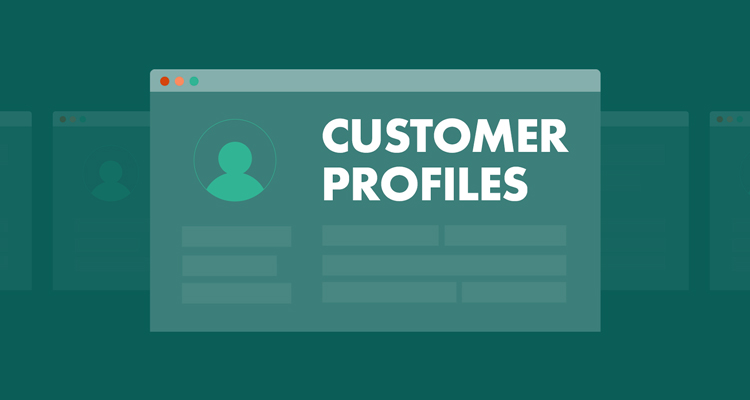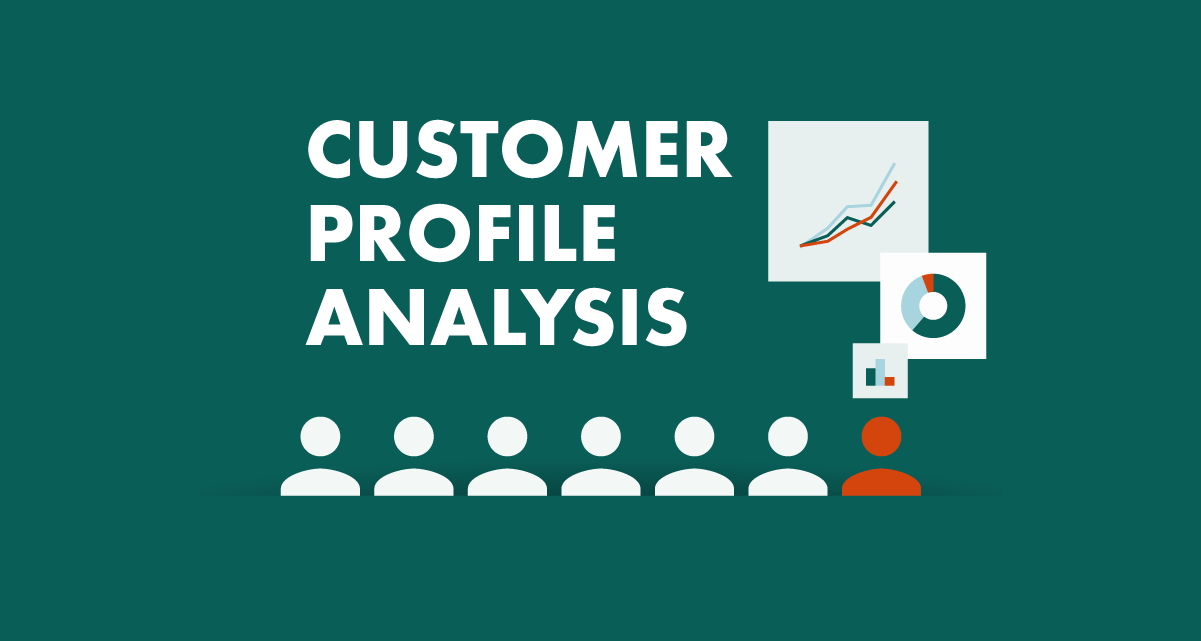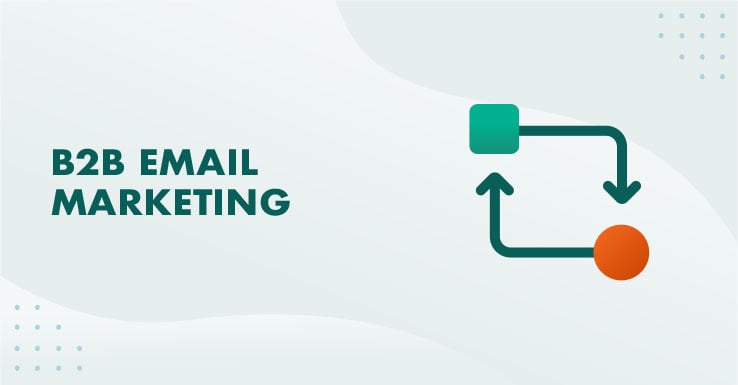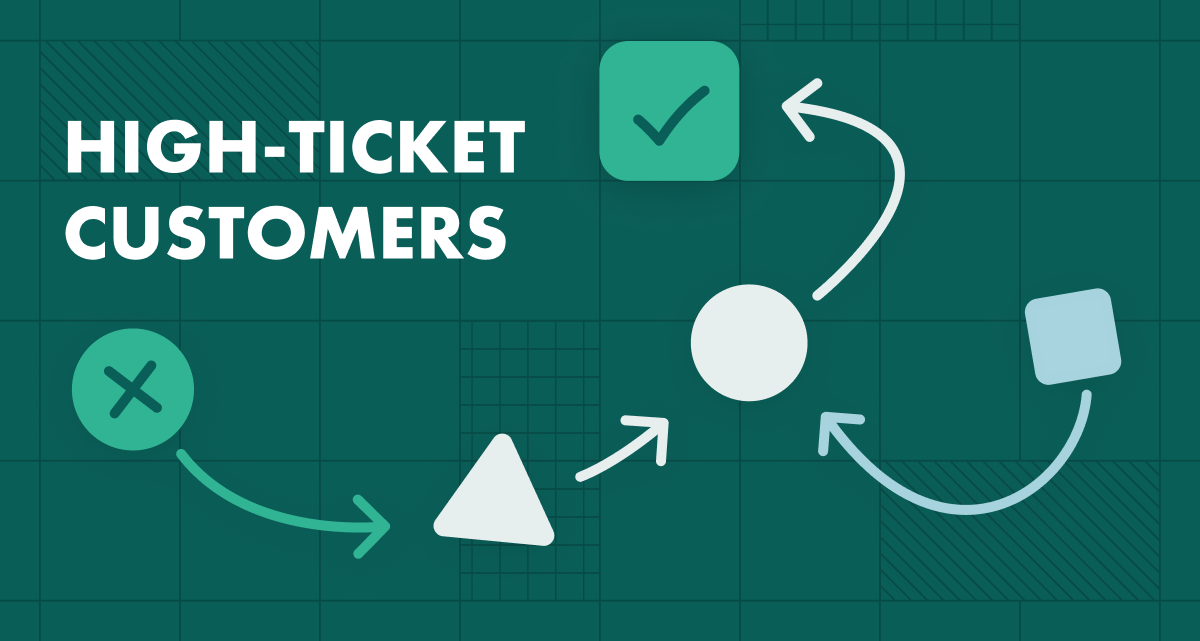Finding the perfect fit for your brand helps you get better leads and make more sales.
Why? Because the right leads result in faster sales cycles, greater customer retention rates, and a higher number of loyal brand evangelists.
Instead of marketing to everyone, you need to know who your ideal customers are and market to those that really need your product.
Creating an ideal customer profile (ICP) is a powerful way to understand your market and target audiences. In short, an ICP is a narrative of the types of accounts that are the reason for your brand. Your ideal B2B customers have the potential to get the most value from your products and services.
Better yet, an ICP helps to inform the entire sales and marketing process from beginning to end. Business owners can better allocate their resources, focus on high intent prospects, and provide more customer value through customer profile analysis.
In this article we will discuss:
- how different customer profile analysis methods and hacks can help smooth out sales processes;
- how using customer profile analysis within a CRM setting can optimize your research and execution;
- where to find the right customer data to create your ICP and how to interpret it.
Let’s get started!
What is customer profile analysis?
A customer profile analysis describes an ideal customer for a business using data gathered in a CRM system.
Of course, you can do customer profile analysis without a CRM, but it would be extremely tedious and time-consuming. And by the time you discover your ICP, another company will have already developed the products or services they need.

When it comes to getting ahead in today’s market, timing is everything. Creating an ICP with a CRM system allows you to evolve your ideal profiles over time easily, discover new markets, and learn how to serve your existing customers better.
Another benefit of developing a customer profile analysis with the CRM software is segmenting your ideal customer profiles, so that your B2B targeted marketing is even more specific.
Customer profile analysis is the process of using data from your CRM and other resources to make better business decisions. In many instances, a customer profile analysis is a required part of a business plan for those seeking investors and funding.
Analyzing your customers and developing several ideal buyer personas helps you understand your customers more meaningfully. Deep customer insights allow marketers and sales reps to recognize the characteristics that indicate a company is a good fit for your brand.
How to find and interpret customer data
Customers keep your whole operation running.
So, it’s essential to know who they are and what they want. That way, you can continue to develop products that your customers actually need. When you look at the right customer data, you can be more effective in your marketing techniques, build your brand loyalty, and make more sales.
According to Baylor University professor of marketing Jeff Tanner:
“Collecting customer data helps you know each customer more individually and treat them that way.”
Tanner further explained that it is important in B2B sales to “craft offers that increase purchase rates at higher margins while also delivering better value to the customers because they’re getting things they want.”
So, where can you find the information your business needs to build ICPs that genuinely reflect your ideal customers?
Existing customers
They won’t all be your ideal customers, but your existing customers hold a wealth of information that businesses should tap into. Conduct regular surveys and discovery meetings to see what drives the most value, who gets the most out of your offerings, and if they’re happy with your products.
Potential customers
Potential customers include those who have interacted with your website and marketing campaigns, those who are unhappy with their current services, and others who showed interest in your competition.
Reach out via social media to get a hold of existing and potential customers. Recent research shows that 84% of millennials use social media daily, so it's a great place to catch key account personas.
Analytics tools
Digital tools are a reliable source of quantitative and qualitative data. Tools like Google Analytics and CRMs with analytic capabilities are essential for B2B businesses to discover more about their website visitors and customer profiles.
When you combine these data sources, you start to picture how your ideal customers might look.
Interpreting customer data
So you’ve collected data. Now, it’s time to interpret what it all means.
There are a few main ways that sales and marketing teams prefer to analyze customer data. A popular way is to generate charts and spreadsheets, since provide a simplified look at large amounts of customer data.
The Explore tool in Google Sheets is another handy way to analyze business data. The power of machine learning allows you to ask questions and gain insights – fast.
Finally, pivot tables summarize data so that you can derive meaningful information between various points by narrowing down the data to particular parameters.
7 customer profile analysis methods to boost sales

Now that we’ve gone over where to find customer data for your ICPs and interpret it, let’s dive into some proven customer profile analysis methods.
Customer profile analysis is crucial if you want to become a top-performing organization. There are many methods that B2B sales teams use to analyze their ICPs and boost sales.
Here are seven ways to boost sales with customer profile analysis:
- Create ICPs that are sales-specific
- Segment leads based on customer profiles
- Leverage targeted emails for each ICP
- Build pipelines for each ICP
- Keep your ICPs updated
- Generate and apply customer insights from data analytics
- Learn how to predict the future
Ready? Let’s go!
1. Create ICPs that are sales-specific
It’s no surprise that ICPs are particularly useful for sales teams. They help sales reps understand who they are talking to and what they need to commit.
Make sure that you capture the right data so that your sales teams can make the most out of your ICPs. Because sales are focused on sales conversations, sales-specific ICPs assist them with adapting their pitch to fit the needs of each customer.
Be sure that they have data about the typical purchases made by an ICP, specifically. Also, check that all customer profiles are easily accessible for reps. Having these ICPs handy can make the difference between making or losing a sale.
2. Segment leads based on customer profiles
Highly segmented leads are not only meaningful for the marketing team. Your sales reps can benefit from segmentation as well.
When leads are segmented based on hyper-specific demographics, behaviors, and buying history, sales reps better understand your B2B customers. This deeper understanding gives them a head start as they go into sales conversations and helps them stay ahead of competitors.
In general, qualified leads are already somewhat segmented based on how they enter your pipeline. But further segmenting leads by profiles gives your sales team a clearer picture of the company they are talking to and how to address their needs.
Use your CRM system to segment leads based on specific ICP data points. For example, you may segment leads based on the organization's size, which industry they fall under, their initial and preferred modes of contact, and much more.
3. Leverage targeted emails for each ICP
Targeted email templates are a great way to improve sales and marketing efficiency, especially when each ICP has its unique template.
After all, each company you work with is different, and how your salespeople interact with them will be different. Use your ICPs to create targeted emails that speak to each profile's needs and pain points.
When they speak with one of your representatives, they are ready to hear what you have to say. That way, sales can get to the heart of the issue on their very first call.
4. Build pipelines for each ICP
Building ICP-specific pipelines is as necessary as sending highly segmented and personalized emails to your B2B customers.
At first, it seems like an extra headache. Especially if your business is already putting in the effort to build targeted marketing. You might think: “Why do they need a personalized pipeline? And how much time will that take away from other sales activities?”
The fact is that B2B customers need personalized experiences to understand how your product and services are truly beneficial.
Vendors blast B2B customers with offers via every outlet imaginable. It can be challenging for companies to sift through the information when there is so much noise.
But a customized pipeline speaks to their unique experiences and grabs their attention in a way that general messaging and blanket sales statements can’t.
And it’s a great way to collect more data and understand your customers better. Better data means better marketing and better sales pitches.
5. Keep your ICPs updated
Outdated information is rarely helpful. And it can lead to poor decision-making.
That’s why you need to stay in touch with the needs and motivations of your customer, as well as keep your customer data and ICPs up to date.
Choose an update schedule and stick to it. Evolve your process as needed, but keep the timing on pace with sales and changes in the market.
6. Generate and apply customer insights from data analytics
One of the best places to generate customer insights is your website analytics.
Who is visiting your site? How are they getting there? Do they click on your CTAs? Are they reading through your blog articles?
Every action can offer valuable insights for sales and marketing teams.
There are many tools out there for businesses to track key metrics and user behaviors. Google Analytics and Hotjar are good places to start if you are new to collecting on-site data.
Then, take what you’ve learned from the data and apply them to every inch of the customer experience.
7. Learn how to predict the future
Create better sales forecasts and make a plan for what’s to come. You can use past behavioral data to discover which features customers love and which features they love less. You should also look at which of your web pages are the most popular, especially those that fit your ICPs.
By building better sales forecasts, you can plan growth activities and marketing campaigns that align with your target companies. And you can use customer insights to predict the customer journey better, too. Use your CRM system built for B2Bs to understand your ICP’s buying behaviors better and build a better map of their journeys.
The bottom line
It comes down to this: your customer profile analysis is only as good as the data you have and how you apply it.
CRM analytics is crucial for creating ideal customer profiles and digging deeper to understand your customer's needs. Proper customer profile analysis is needed to optimize your products, services, and targeted marketing for B2B customers.
The strategies discussed today will help your sales and marketing teams take full advantage of your CRM software. When it comes to B2B sales, teams need to focus on more than just metrics. They also need to understand your ideal accounts' motives, needs, and behaviors.
Developing a customer-centric sales process starts with customer profile analysis. Once you’ve established your ICPs and you start using that data to your advantage, sales will follow.




